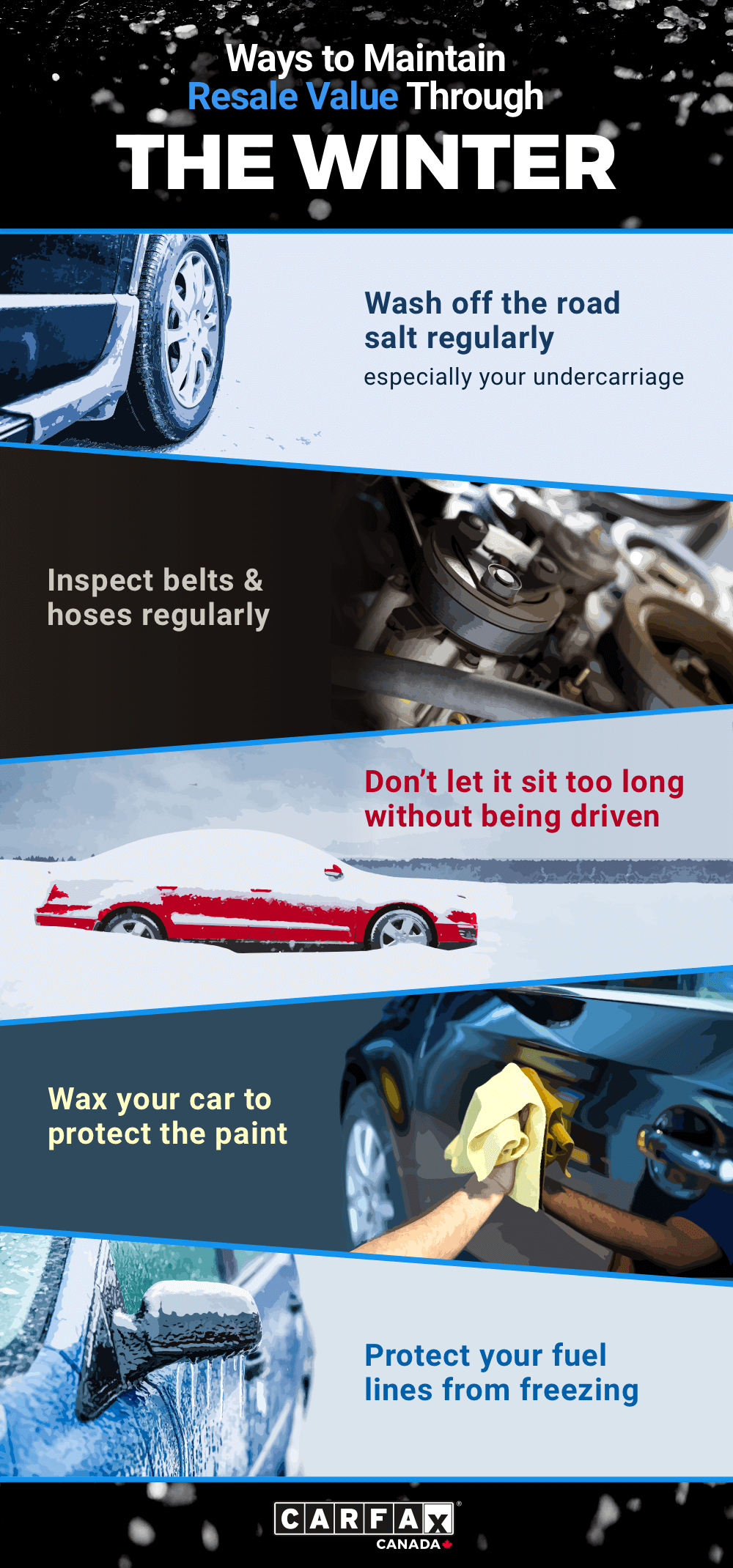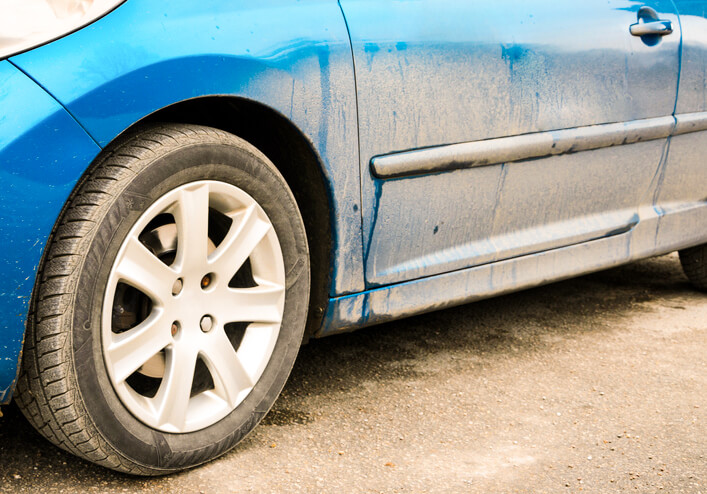As Canadians, we’re familiar with all the wonders and challenges of winter. Slippery roads can send you sliding, but they’re not the only hazards out there.
There are many elements of winter that can damage your car. Proper winter maintenance provides short-term benefits in that it stops you from dealing with damage or repair expenses, but it is also helpful in the long-term, as winterizing your car can help maintain its resale value.
Icy roads mean sand and salt
Depending where you live, sand and/or salt trucks are usually close behind the first major snowfall. These agents are used to improve traction on icy roads, but they can both damage your vehicle.
Sand includes pebbles and even small rocks, which can bounce up and hit your vehicle’s glass and body, causing chips in your windshield, mirrors and paint.
Salt is another agent used to melt the ice and keep roads safe during winter months. Over time, salt exposure can cause corrosion and the formation of rust on your car. Most salt damage happens beneath the vehicle as the undercarriage is completely exposed to salt that sprays up from the road. When a vehicle is parked in a garage after a salty winter drive, that salt is left to stick and over time it can damage the vehicle’s brakes, exhaust and muffler systems and more.
Waxing your car before the winter can give added protection to its exterior, and regular car washes (visit one with an undercarriage spray) can prevent buildup on your exterior and undercarriage. Consider these measures as a long-term investment in your vehicle’s esthetics, and resale value.
Cold stiffens rubber components and causes cracks
Whether it’s the hoses that carry fluids from one part of the vehicle to another, or trim around your car’s door, mirrors, or other parts of the exterior, your vehicle has more rubber than you think.
Low temperatures can cause rubber to crack. Extreme weather changes (like the difference between a warm garage and frigid outside air) cause repeated expansion and contraction, which will weaken rubber over time. Moisture can get into small cracks, and when temperatures drop causes that moisture to freeze, the cracks expand and the problem grows.
Your best protection is regularly inspecting your hoses, and having them checked by a professional at the first signs of wear.
Cold can sap your battery
Extreme temperatures are hard on car batteries. Cold reduces the capacity of lead acid batteries (high temperatures increase the capacity.) Winter driving requires more accessory use, like headlights, heaters, wipers etc. – causing greater strain and higher battery demands. Cold can even cause a battery to fail – in some cases it may even warrant a replacement.
The battery may work fine when the vehicle is operating, but it doesn’t always fare so well when left inactive. If you leave your vehicle for long periods without driving it, have someone start it up and take it for a few laps around the block every now and then. This advice is especially important for snowbirds who head south to avoid the harsh Canadian winter.
Cold days can freeze your fuel lines
Water vapor in your fuel lines can freeze in extreme cold. Using a fuel additive can help prevent this from happening – your local automotive shop or dealership should be able to recommend a good quality fuel line antifreeze.
Knowing how to prepare your car for winter is very important, especially when you live in an area that gets hit with heavy snow and frigid temperatures. Winter maintenance can help you avoid some of the lesser-known winter threats that can impact your resale value.
Download our free Used Car Selling Guide for more on the factors that impact your car’s resale value.





